Впереди планеты всей обычно был Digital Globe. Он доступен на халявку, если зарегистрируешься в openstreetmap, будет как подложка в редакторе josm.
Но, то такое, на самом деле данные доступные через WMS/TMS у того же digital globe могут отличаться актуальностью в зависимости от платности-бесплатности.
Бывает так, что например гугл купит у digital globe новые данные, сделает водяные метки со своим копирайтом, и у гугла digital globe данные получаются актуальнее, чем у самого digital globe публичный слой.
Есть еще Bing от микрософта, и ESRI ArcGis Imagery (сильно совпадает с digital globe).
Скачай себе SAS.Planet + wine и поиграйся c доступными слоями.
Также, если ты живешь в нормальной стране, где нет «уберсекретности карт», то к твоим услугам государственный геопортал, с WMS/TMS сервисом отдачи тайлов и с самыми актуальными данными для твоей нормальной страны.
Примеры нормальных стран с такого рода гео-порталами: Австрия, Германия, Польша, Литва, Латвия, Испания…
nikitos ★★★
()
- Показать ответы
- Ссылка
Оказывается карты со спутниковыми снимками гораздо лучше у Apple устройств. Буквально сегодня прочитал, что лучшая прорисовка России и нашей глухомани именно у Apple. И сейчас google maps теряет миллионы пользоватлей, которые переходят на испоьзование именно карт Apple, на которых отлично прорисованы все уголки нашей необъятной.
Google maps карты в основном детально отображают только близлежащие участки к оживленным трассам и городам, но вот с глубинкой у них проблемы, все мутное и нечетаемое, что для нас очень плохо.
Для сравнения приведу два снимка, первый с Google Maps и второй снимок этого же участка с карт Apple:
<a class=»ipsAttachLink ipsAttachLink_image» href=»<fileStore.core_Attachment>/monthly_02_2014/post-1-0-72778200-1392793590.jpg»>[img]<fileStore.core_Attachment>/monthly_02_2014/post-1-0-72778200-1392793590_thumb.jpg[/img]</a>
<a class=»ipsAttachLink ipsAttachLink_image» href=»<fileStore.core_Attachment>/monthly_02_2014/post-1-0-88434200-1392722115.png»>[img]<fileStore.core_Attachment>/monthly_02_2014/post-1-0-88434200-1392722115_thumb.png[/img]</a>
Видите разницу? Второй снимок с карт Apple гораздо детальнее и уже можно что-то конкретное разглядеть. Для нас кладоискателей идеальный сервис. Но спешу огорчить, что пока лично я не нашел этих карт для пользователей Windows. По моему карты доступны только для Apple техники, то есть iPhone, MacBook, iMac, Mac, iPad. Если таковой у вас нет, то ничего не поделать. Если кто найдет способ как посмотреть эти карты на Windows обязательно оставьте ссылочку в этой теме.
Пока от себя могу предолжить за спасибо сделать снимок для вас нужной вам области по вашим координатам [img]<fileStore.core_Emoticons>/emoticons/default_smile.gif[/img]
Последний раз редактировалось Буч 19 фев 2014, 11:06:40, всего редактировалось 1 раз.
андред, Я себе делал нужные мне карты для Сас.планет, но у меня попроще инструкция была.
Надеюсь импотртировать в глобалмапере получилось?
1. Назови папку с кешем Shubert (В ней должны быть папки типа Z10, Z11..)
2. Эту папку нужно закинуть в папку SAS.Planet\cache_gmt\
3. Потом зайди в папку SAS.Planet\sas.maps и создай там папку MyMaps
4. Скопируй в MyMaps любую папку .zmp (например sas.maps\Bing\Bing_roads.ru.zmp) и переменуй ее в Shubert.zmp
5. Открой файл MyMaps\Shubert.zmp\params.txt удали из него все строки и вставь эти:
[PARAMS]
GUID={F6574B06-E632-4D5F-1876-C8FA658B57DF}
name=Шуберт
name_en=Shubert
name_uk=Shubert
ParentSubMenu=Мои карты
ParentSubMenu_en=MyMaps
ParentSubMenu_uk=MyMaps
asLayer=0
projection=1
sradiusa=6378137
sradiusb=6378137
NameInCache=Shubert
separator=0
Ext=.jpg
UseDwn=1
Sleep=0
ContentType=image/jpeg
Version=141
CacheType=4
6. Запусти саспланет.

List of the Top Satellite Maps
These are the top 25 satellite maps in 2024.
The best part?
You’ll get to explore Earth in new ways that you’ve never thought possible.
This is the most comprehensive list of satellite maps that you’ll find online.
Let’s get started.
1. Google Maps

Google Maps is the ULTIMATE tool for satellite maps. It’s grown over the years. So has its features:
- Like it’s panoramic street views.
- Its 3D perspectives are mind-blowingly insane.
- And almost everyone’s favorite: finding their house with its solid addressing system.
But the best part about Google Maps is that it’s regularly updated. In fact, it’s hard to find any imagery that’s more than 3 years old.
The only downside I can think of is that you only get ONE snapshot in time. That’s where Google Earth Pro comes in…
READ MORE: 3D Maps: A Complete Guide To See Earth in 3D
2. NASA Worldview
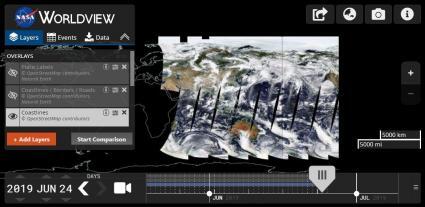
We all know what Earth looks like. But what does it look like RIGHT NOW?
NASA’s Worldview aims at real-time imagery delivery. That is… Earth how it is “right now”. But there’s more:
It shows over 800 layers of satellite imagery. And typically, most have just a 3-hour delay in time.
3. Esri Wayback Atlas
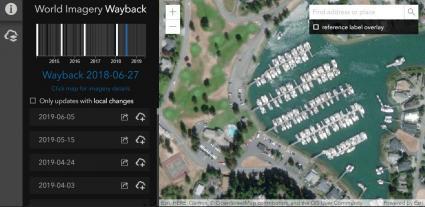
Esri’s Way Back Atlas is like going through a time machine. Similar to Google Earth Pro, you can selectively choose from satellite maps back in time.
But this atlas holds a secret wealth of information. For example, New York has 100+ satellite maps dating back to 2014.
Esri’s World Imagery layer serves as the best available of all satellite maps… But Esri’s Way Back Atlas puts you in the driver’s seat for what’s “best available”.
4. Google Earth Pro
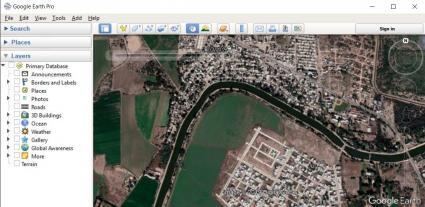
Pop quiz, hotshot! Does Google Maps and Google Earth Pro share the same imagery? The answer is that they are completely DIFFERENT from each other.
Google Earth Pro lets you hit rewind in its historical timeline. That way, you can interactively view past satellite maps from anywhere in the world.
Long ago, this used to be a paid feature. But now, it’s completely free. So if you want to see imagery like capsules of time, Google Earth Pro is a complete winner.
5. Mapbox

This is quickly becoming one of my go-to satellite maps. It’s because Mapbox removes the clutter and aims for clarity.
First, head over to Mapbox. Next, go to its satellite view. As you zoom in, you’ll see high-resolution satellite maps.
It includes imagery from the most iconic commercial satellites such as Maxar Technologies.
READ MORE: Mapbox Review: 5 Things We Like
6. Esri World Imagery
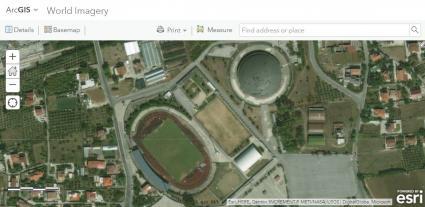
Esri stitches together imagery from 300+ contributors around the globe. The result?
A world imagery layer that is one of the most powerful, up-to-date base maps today.
Quickly and effectively, you can view satellite maps down to 3cm in pixels. That’s the size of a tiny pebble!
7. Bing Maps

If I could give you one tip for satellite maps, it would be to not ignore Bing Maps.
Don’t get me wrong: Bing’s street views are sparse and it doesn’t have oblique views like Google Maps.
But Bing Maps still serves 10+ TB of imagery. While some imagery can be years out of date, populated areas still have frequent updates.
8. Landsat Explorer

The launch of Landsat-1 in 1972 was a hinge point for space satellites. It was a milestone moment that prompted the 40+ years of archiving our planet’s history.
Hundreds of satellites have followed Landsat’s path into space. But it wasn’t just in color.
In the Landsat Explorer, you can see the world in new ways like near-infrared, a spectral index or like how our eyes see it.
9. HERE Maps
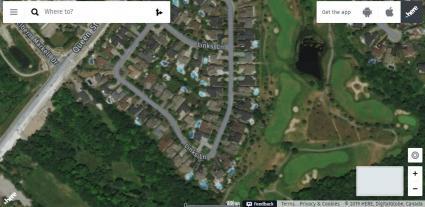
As a company, HERE focuses on navigation, traffic patterns, and self-driving cars.
But as part of its platform, it delivers satellite maps for drivers. What I’m referring to is its HERE map.
When you head over to HERE, you’ll first notice its squeaky clean interface. As you pan around, you get a range of satellite maps to explore.
10. Planet Explorer
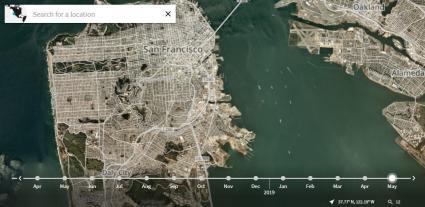
The unfortunate about this satellite map is that you need to create an account. But when you do, Planet Explorer is like the goldmine of satellite maps. Here’s why:
It doesn’t just show satellite maps from 450+ microsatellites. But you get nearly daily updates at 2.5 m resolution
There’s only one catch: First, you’ll have to register an account. It’s free for the first 15 days. But after that, you’ll have to pay.
11. MapQuest
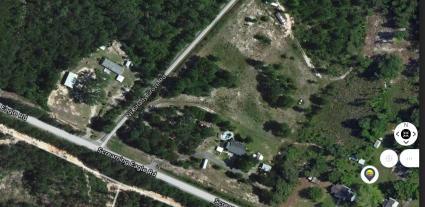
When you visit MapQuest, you’ll get an automatic feeling of nostalgia.
Sure, it’s a map that’s trying to sell you a hotel. But it’s not all bad: MapQuest leverages services from TomTom giving you a mixed bag of imagery.
MapQuest was once popular in the 90s. Admittedly, it’s still not much of a map. Unless it’s on a “Quest” for a better “Map”. Just waiting for that day to come.
12. Apple Maps
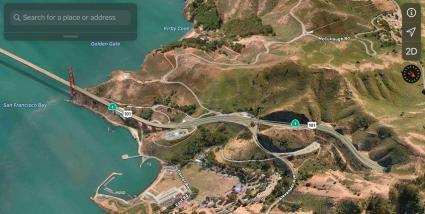
Let’s start with the good. If you own an iPhone, iPad, or Mac computer, you get to use the sleek interface, 3D integration of Apple Maps.
Now, for the bad… If you don’t have an Apple product (like myself), you won’t have access to any of its built-in mapping applications.
Because at the end of the day, it’s Apple Maps that delivers seamless navigation and accurate mapping, enhancing user journeys. Also, its commitment to privacy makes it a trusted companion for exploration.
13. MDA NaturalVue
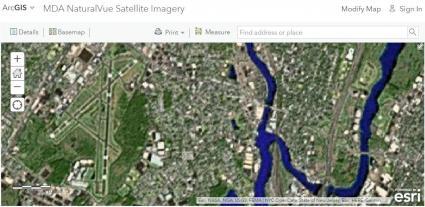
For a coarse view of the Earth, Maxar’s NaturalVue is at a 15-meter resolution. Just to give you perspective on what that means:
First, find a soccer field on the map. Then, count the number of pixels. If you count 20 or so, it’s so coarse that you won’t even be able to recognize the center field.
Sure, NaturalVue is old. It’s even a bit of a wildcard. But it’s a bonafide hit if you’re looking for consistent world imagery.
14. Sentinel Playground
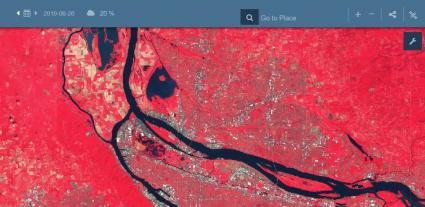
The Sentinel Playground lives up to its name. Because the truth is that satellite maps aren’t just for pretty pictures.
For example, the 12 indices in the Sentinel Playground characterize Earth’s features differently.
It’s like those little Russian Dolls: You see layers upon layers. Each one is a proven way that can help you get to the bottom of distinguishing anything. Note that Sentinel Playground is deprecated and re-routed to the Copernicus Browser now.
15. USGS Earth Explorer
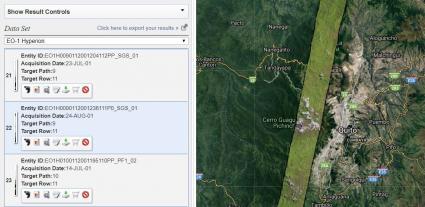
USGS Earth Explorer gives users 45+ satellite platforms to browse through. But you don’t have to download data. You can simply preview ANYTHING.
For example, it’s the only source where you can view hyperspectral imagery on the fly. Not only that, but you can unlock spy satellites like CORONA from the 1960s.
Overall, USGS Earth Explorer rewires how you see satellite maps. Because seeing is believing, give it a test drive.
16. Leaflet

Leaflet allows anyone to build lightweight web maps they can call their own.
As part of Leaflet, it has a range of free tile providers. For example, Esri, Geoportal France and CartoDB are all there.
A cool feature is that when you pan, it interactively updates each provider’s map. This means that Leaflet’s interactive maps offer a unique view of the world, not available in other satellite maps on this list.
17. Cesium
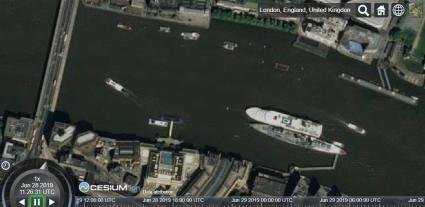
Similar to Leaflet, Cesium lets users build their own customized web maps.
But because Cesium is all in 3D, viewing is off the charts.
The Cesium Viewer is joined by satellite maps like Bing, Esri and Mapbox.
18. Tomnod/GeoHIVE
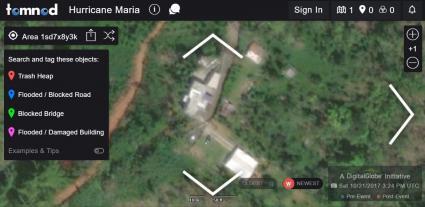
Tomnod leverages the power of crowdsourcing during times of crisis. For example, Tomnod is best known for its platform search for flight MH370.
Regardless of the campaign, Tomnod can be a treasure trove for satellite maps. Anyone who doubts it should look at its past campaigns Tomnod proves we don’t need MacGyver on the case. Instead, we need the power of crowdsourcing.
After 9 years and kilometers of satellite imagery, Maxar (previously DigitalGlobe) is shifting the Tomnod platform to GeoHIVE.
19. Maxar’s Open Data
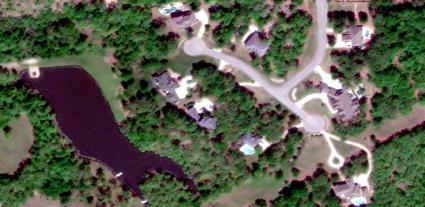
Maxar has two flavors of open data:
First, its Open Data Program supports major global crisis events like earthquakes, hurricanes, and forest fires. That way, those who need it can get the support they need. During these humanitarian events, they release each photo into the public domain under the Creative Commons 4.0 license.
Secondly, Maxar has product samples available around the globe. For example, sample imagery products are available for Rio de Janeiro (Brazil), Stockholm (Sweden), and Washington DC (USA).
20. NOAA Weather Radar
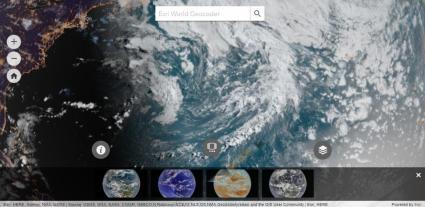
NOAA’s World in Real-Time is the first out-of-the-gate. The trick to this one is how it gives you near real-time weather.
In this global map, you can see the weather from space as it would appear from our eyes.
Alternatively, the near-infrared lets you tackle the challenge through a different lens.
21. GOES Viewer
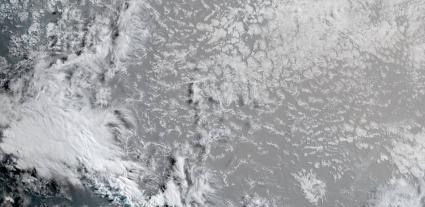
GOES knows the weather. These geostationary satellites update our weather every 5 minutes. But how do you see it?
First, head over to the GOES Imagery Viewer. Next, select your target region.
This will lead you to satellite maps for the weather. Finally, choose your view and get an updated snapshot of satellite weather.
22. Latest 24

As NOAA satellites silently circle Earth, we get a preview of our planet from space.
Instead of a 3D perspective, NOAA has built a set of satellite maps that target weather with a top-down view.
In fact, you can interactively fast-forward and rewind the weather from the last 24 hours each day.
23. Night View

How does Earth look like at night? And what is the extent of human settlement on the landscape?
By stitching 400+ images from space, NASA had compiled the most comprehensive night view in its black marble map.
As seen in this night view map, major cities illuminate the sky the most. Overall, this gives us a ballpark figure for how much humanity has inhabited the land.
24. Global Forest Map
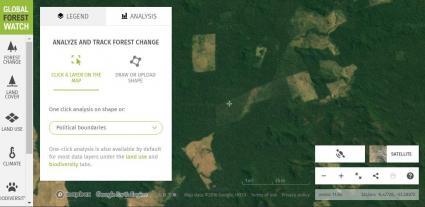
When a tree falls in the forest, satellites hear the impact. Anyone who doubts the severity of deforestation can browse it in the Global Forest Watch.
First, go to the Global Forest Watch. By default, cleared forests are on. Countries like Indonesia, Brazil, and Peru light up.
If you zoom in, it has satellite maps like Planet’s 450+ constellation – the paid one (#9) I mentioned above.
25. NASA’s Fire Information for Resource Management System (FIRMS)
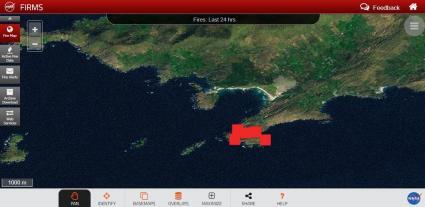
When wildfires roar, satellites track where they burn. Specifically, they capture wildfires as they happen and stream them through active fire maps like FIRMS.
Yet somehow, there’s a curious disconnect between those fighting fires on the ground.
Satellite sensors like MODIS and VIIRS make use of thermal infrared. Only then, we can detect fires as small as a hot spot… all the way up to a volcanic eruption. More on wildfire maps here.
Conclusion
We’ve put an all-out-effort equipping you with the best satellite maps.
Now, it’s your turn:
You now have a competitive edge for space imagery.
But what’s your favorite? And what did we miss?
Go to our comments section below.
Changelog
August 9, 2023 – We removed Yahoo Maps (retired) and replaced it with Apple Maps. Fixed inactive links.
October 19, 2023 – We simplified the article by removing the table of contents.
Subscribe to our newsletter:
Разрешающая способность равна длине волны делённой на диаметр объектива. Для видимого света (длина волны 550нм) и диаметром объектива 1м разрешающая способность будет 0,1″.
Пусть спутник расположен на высоте 600 км. Тогда, вооружившись школьной тригонометрией, вычисляем, что разрешение будет 29см. Автомобиль диной в 4м будет занимать 13 пикселей.
В общем, переплюнуть этот показатель довольно сложно. Разве что запулить на орбиту объектив 2м и больше, но это не так просто, да и не нужно никому. Так что не стоит ожидать в будущем разрешения 20см и лучше.
Немного истории из википедии
Новые коммерческие спутники серии WorldView-1 фирмы DigitalGlobe имеют разрешающую способность в размере 50 см, то есть позволяют опознавать объекты на поверхности Земли размером более полуметра. Спутник GeoEye-1 корпорации GeoEye имеет разрешение в надире в размере 41 см в панхроматическом диапазоне, но коммерческим потребителям до июня 2014 года были доступны снимки только с разрешением 50 см. В июне 2014 года министерство торговли США дало разрешение на продажу снимков с более высоким разрешением. В феврале 2013 года GeoEye влилась в DigitalGlobe. 13 августа 2014 года DigitalGlobe запустила спутник WorldView-3 c разрешением 31 см. Спутник третьего поколения GeoEye-2 под именем WorldView-4 с разрешением 25-34 см запущен в ноябре 2016 года.
Однако не забываем, что спутниковые снимки часто дополняются аэрофотосъёмкой. Это, хоть и дороже выходит, но даёт сними более высокого качества. Конечно, всю планету покрывать такими снимками никто не будет.
